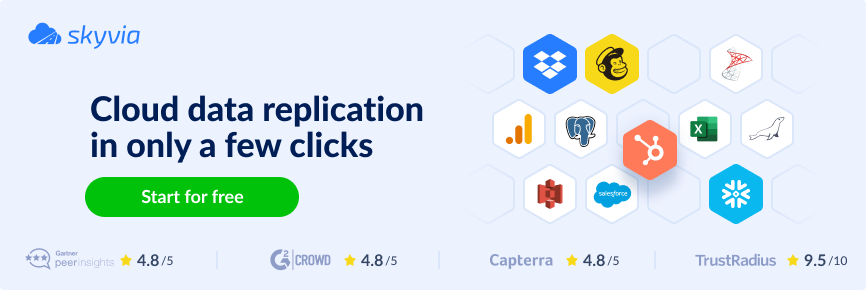When it comes to the data’s place of residence – the data warehousing option is nowadays. Recent research has proven that 54% of organizations have already adopted data warehouses, making them the most widely used technological solution for data storage and further analysis.
Any brick-and-mortar warehouse needs a manager to receive goods from suppliers and accommodate them adequately, and any data warehouse needs an orchestrator. And the Snowflake tool comes in handy! It allows companies to create, fill up, and sustain data warehouses.
Snowflake receives digital goods — data from cloud apps and on-prem sources — and orchestrates them. This article focuses on HubSpot data source as the most popular marketing automation solution used by millions of companies worldwide. We describe HubSpot Snowflake integration in several steps and explain how Skyvia makes this process painless.
Table of Contents
- About Hubspot
- About Snowflake
- Benefits of Integrating Hubspot to Snowflake
- How to Connect Hubspot to Snowflake in Skyvia
- Loading Hubspot Data to Snowflake
- Data Analysis in Snowflake
- Other Sync Scenarios
- Conclusion
About Hubspot
HubSpot is an excellent CRM solution for marketing, sales, and customer service teams. This tool is so popular because it’s free to use and implements necessary functions. Its crucial feature is marketing automation with a strong focus on customer satisfaction improvement.
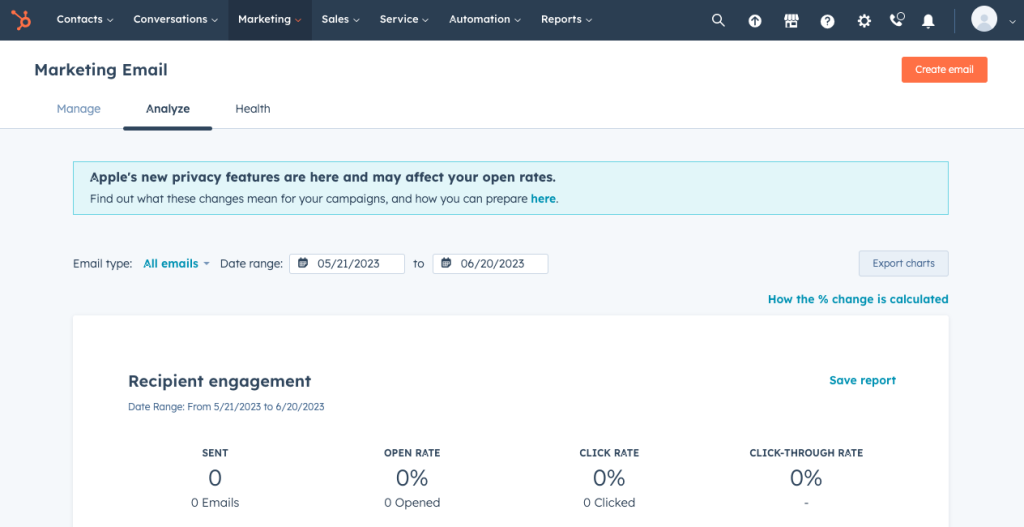
Key Features and Benefits of Hubspot
Being a CRM, HubSpot allows users to operate the customer data according to business needs. Let’s have a look at what exact features HubSpot offers to businesses:
- Contact management. Individual leads and company profiles can be created by including contact details and activity status.
- Conversation management. HubSpot provides chat and ticketing channels as a form of interaction with customers. Additionally, integration with the corporate Facebook Messenger is easily configurable.
- Ad campaign analysis. It’s possible to connect corporate Facebook, Instagram, LinkedIn, and Google Ad accounts to HubSpot. The system automatically analyzes how users interact with different ads and suggests how to improve the effectiveness of ad campaigns by aligning them with user interests.
- Email automation and analysis. This makes a great part of the whole marketing automation. HubSpot has mechanisms to create emails based on templates, send them in bulk to chosen contacts, and analyze recipient engagement rates.
- Sales process guidance. There is everything needed to keep track of sales deals: meeting scheduling, documents, and payments.
- Advanced reporting. It’s possible to create dashboards to obtain a clear overview of practically every marketing aspect and sales performance. The connection of HubSpot with Snowflake described later in this article introduces even more powerful reporting and analysis capabilities.
The features mentioned above are included in the free version of HubSpot. There are also extra functions in the Professional plans of Marketing, Service, and Sales Hub. Thus, marketing campaign design, sales forecast, and feedback surveys are available at additional cost.
About Snowflake
Snowflake is a cloud-based solution designed for bringing structured and semi-structured data to a unified platform. It accommodates data from cloud applications, IoT devices, and OLTP databases in centralized data storage. This greatly facilitates operational reporting, empowers scalability, and makes data analytics transparent.
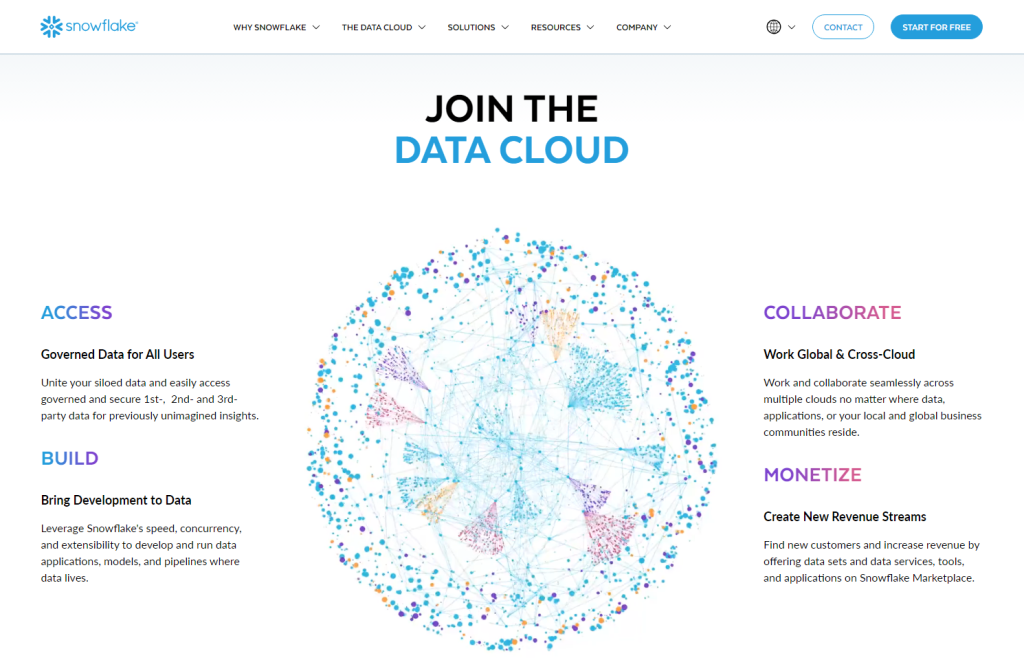
Key Features and Benefits of Snowflake
As Snowflake is completely cloud-based, it perfectly integrates with the largest cloud service providers: Azure, AWS, and Google Cloud. Snowflake provides the following features for its customers:
- Security. Role-based control and multi-factor authentication guarantee a secure approach to data storage and access.
- Time travel feature. Snowflake provides access to deleted or modified data at any point in time. This is especially convenient when one needs to restore some data.
- Scaling. As businesses might require various storage capacities at different points in time, scaling on-demand is possible with the corresponding prices.
- Data sharing. Snowflake offers secure sharing of data even with those who don’t have an account on the platform. You can also find more about this in the article on the best ETL tools for Snowflake.
- Analytics. This service perfectly integrates with BI and analytics tools to ensure seamless querying of big data for driving valuable insights.
Benefits of Integrating Hubspot to Snowflake
Each of the above-mentioned tools performs excellently in its genre, though their combination in HubSpot Snowflake integration reinforces the power of each. Here’s a list of the most tangible benefits that one can experience when combining the strengths of both solutions.
- When importing data from HubSpot to a centralized data warehouse, a wide range of analytical options is revealed. Snowflake prepares data and integrates it with analytical tools for driving balanced decisions for businesses without spending much time on that.
- A data warehouse can host data from various sources, so it’s possible to transfer data not only from HubSpot but also from MailChimp, Dynamics CRM, Salesforce, and other tools used by a company.
- HubSpot Snowflake data sharing doesn’t take much time and effort as there are advanced solutions, such as Skyvia, that don’t require any complex API configurations to transfer data from one platform to another.
Prerequisites
Before starting the process of data transfer from HubSpot to Snowflake, make sure the following preconditions are met:
How to Connect Hubspot to Snowflake in Skyvia
Instead of spending hours configuring the API via the CLI environment, use Skyvia for flawless data integration between tools. This is a cloud-based platform accessed directly via a browser with no extra software installations. Such a service is suitable for any kind of business due to its enormous scaling capabilities and pay-as-you-go pricing model supporting companies upon their evolvement.
Skyvia performs different data integration scenarios (ELT, ETL, and Reverse ETL) and supports more than 180 applications and widely used databases or data warehouses. This service can transfer data in the opposite direction – from Snowflake to HubSpot – according to the reverse ETL workflow. Skyvia has the Replication solution to simply create a copy of HubSpot’s data in Snowflake. Also, it allows the transfer of data from HubSpot to Snowflake according to the ETL scenario with conventional data transformations using the Import tool.
As real data integration scenarios usually appear more complex than predicted, there’s a need for advanced data pipeline design. Skyvia has Data Flow and Control Flow components for compound data pipelines involving complex logic and various data sources. For instance, it’s possible to send data from HubSpot and other cloud apps with multistage transformations into a DWH in Snowflake.
In this article, we particularly focus on the basic data integration scenario using the Import tool provided by Skyvia to move data from HubSpot to Snowflake. However, before integrating data, we need to establish connections with the platforms of interest.
Create HubSpot Connector
- Log into your Skyvia account.
- Press the +NEW tab in the upper panel.
- Click Connection and select HubSpot from the list.
- Click Sign In with HubSpot.
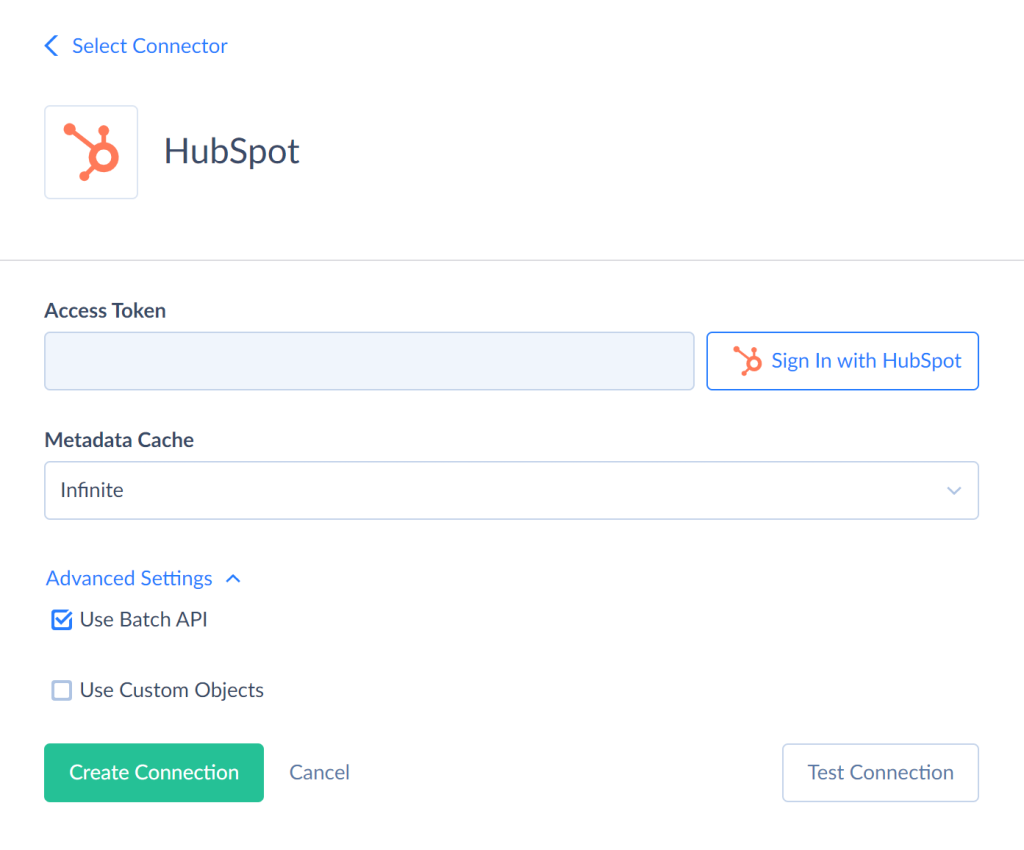
- Enter your HubSpot credentials and click Log in.
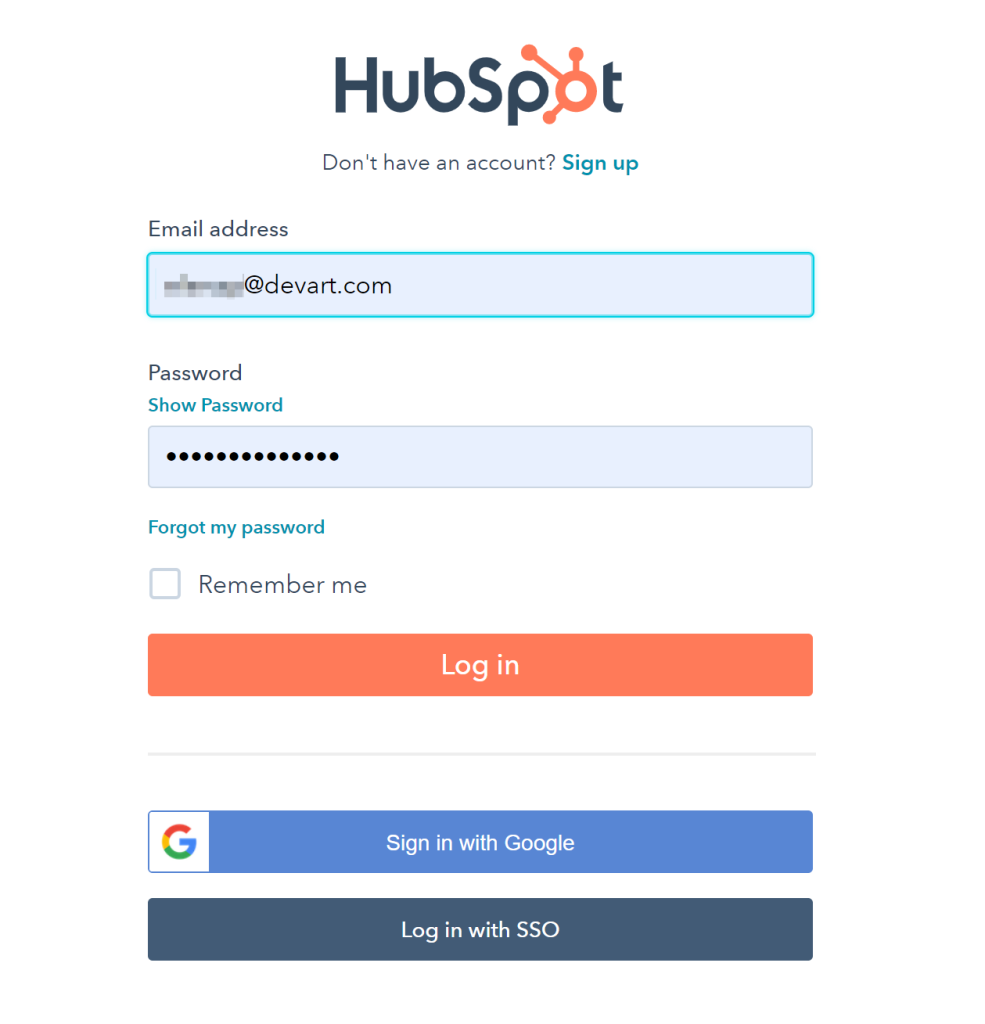
- Select an account and click Choose Account.
- Click the Connect app to approve the access request.
Create Snowflake Connector
- Press the +NEW tab in the upper panel.
- Click Connection and select Snowflake from the list.
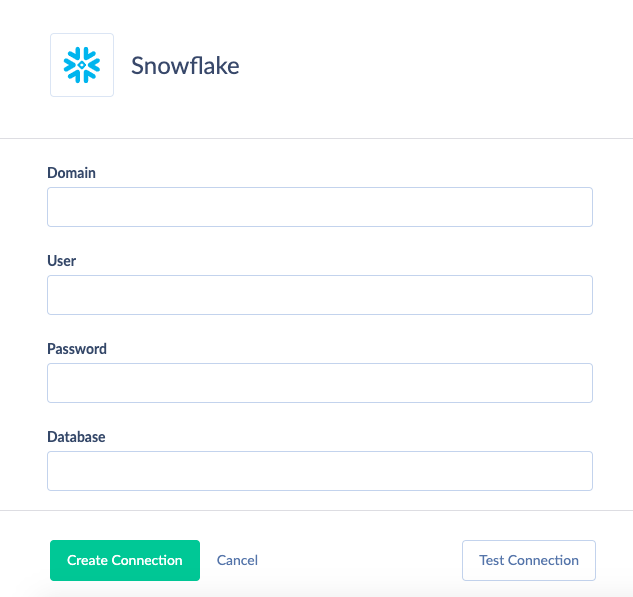
- Enter your Snowflake domain name in the Domain field.
- Enter your Snowflake username in the User field.
- Enter your Snowflake account password in the Password field.
- Indicate the database name in the Database field.
- Enter the preferred data warehouse to transfer data to in the Warehouse field.
- Click Create Connection.
There are also optional parameters in the Snowflake connector setup window, such as Schema and Role, that could be specified if necessary.
Loading Hubspot Data to Snowflake
After the connectors are established in Skyvia, it’s the right time to start sharing HubSpot data with Snowflake. Let’s have a look at the most common scenarios for data transfer between these tools: data replication with the Replication tool and data integration with Skyvia’s Import tool.
SCENARIO 1: CREATE REPLICATION PACKAGE (ELT)
When there is a need to create an exact copy of selected HubSpot data in a DWH, use the Replication solution – an easy-to-use ELT tool. Skyvia can automatically create tables within DWH and then keep them up-to-date with incremental updates.
Let’s have a detailed look at how to set up HubSpot to Snowflake data replication in Skyvia.
- Press the +NEW tab in the upper panel.
- Select Replication.
NOTE: Replication with Snowflake connector works only in the bulk load mode.
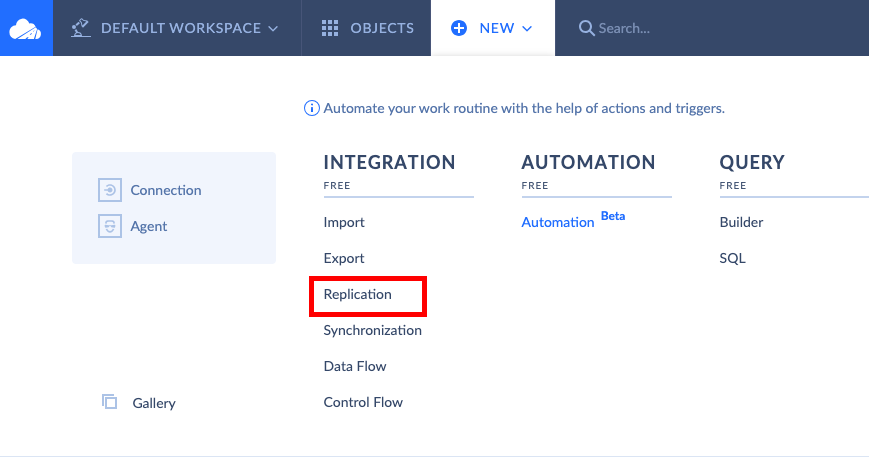
- Indicate HubSpot as a source and Snowflake as a target.

- Select the Incremental Updates checkbox so that the system will add only new or updated records in further replication package runs.
- Select the Create Tables checkbox if new database tables must be created for replicated data.

- Select the HubSpot data fields for replication.
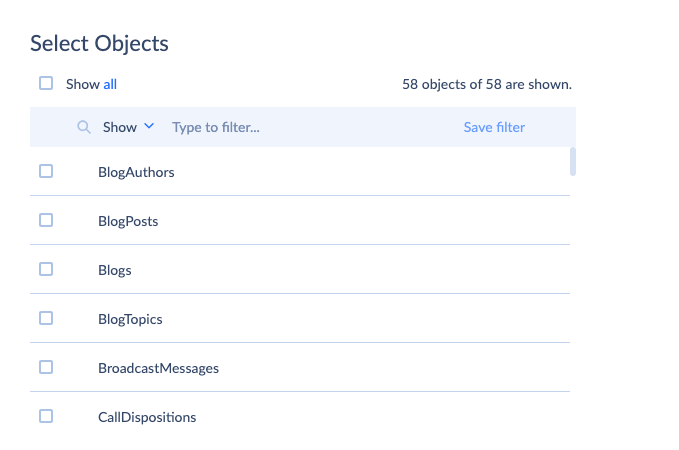
- Click Schedule to set the timing for the replicated copy check and keep it in the actual state.
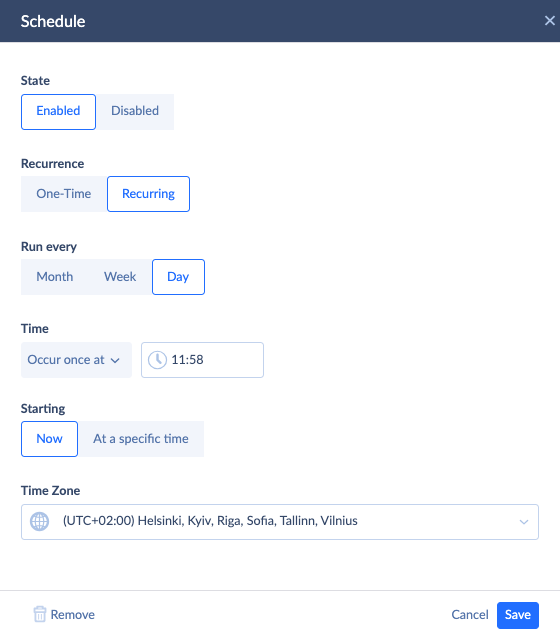
- Click Create to preserve the replication package.
To execute the replication package immediately, click Run. Otherwise, it’s po
SCENARIO 2: CREATE IMPORT PACKAGE (REVERSE ETL)
Let’s have a look at the sample use case: moving Deals data fields from the Snowflake-based DWH into the HubSpot. It’s done with the Data Import solution using the Reverse ETL scenario to improve operational effectiveness.
- Press the +NEW tab in the upper panel.
- Select Import.
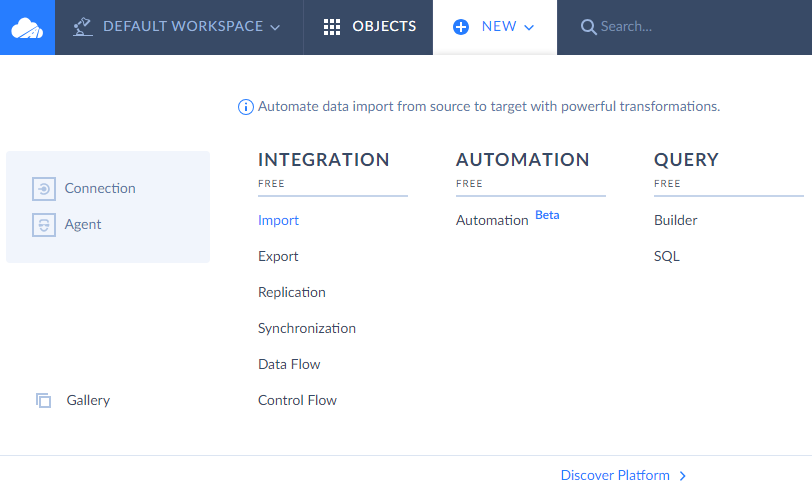
- Indicate all the necessary parameters for the import package: Snowflake as a source, HubSpot as a target, options, and batch size.
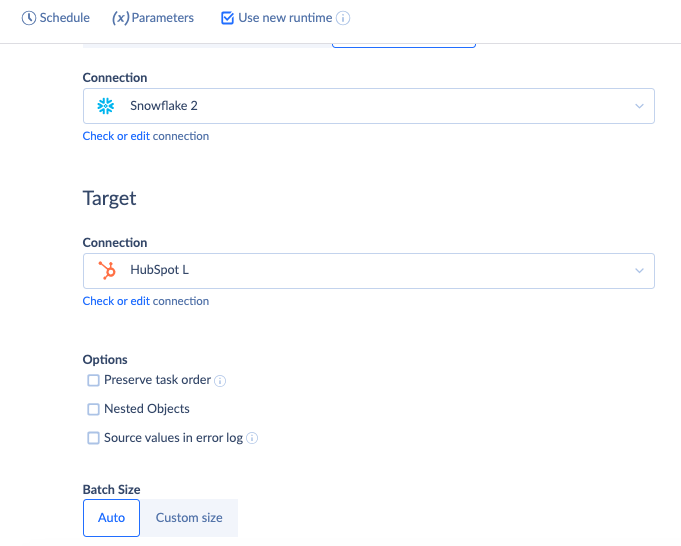
- Click Add new under Tasks to define parameters for data integration and mapping.
- Select the parameter (in this case, the one corresponding to deals) from the list of Source fields. Click Next Step.
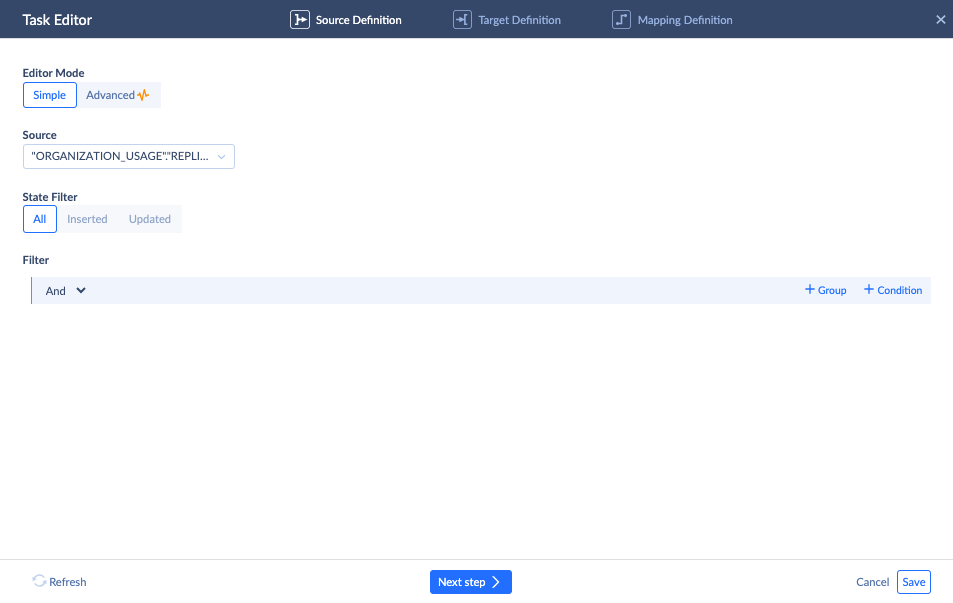
- Select the corresponding data field on the HubSpot target side (in this case, Deals).
- Indicate the data integration operation type (INSERT, UPDATE, DELETE). Click Next Step.
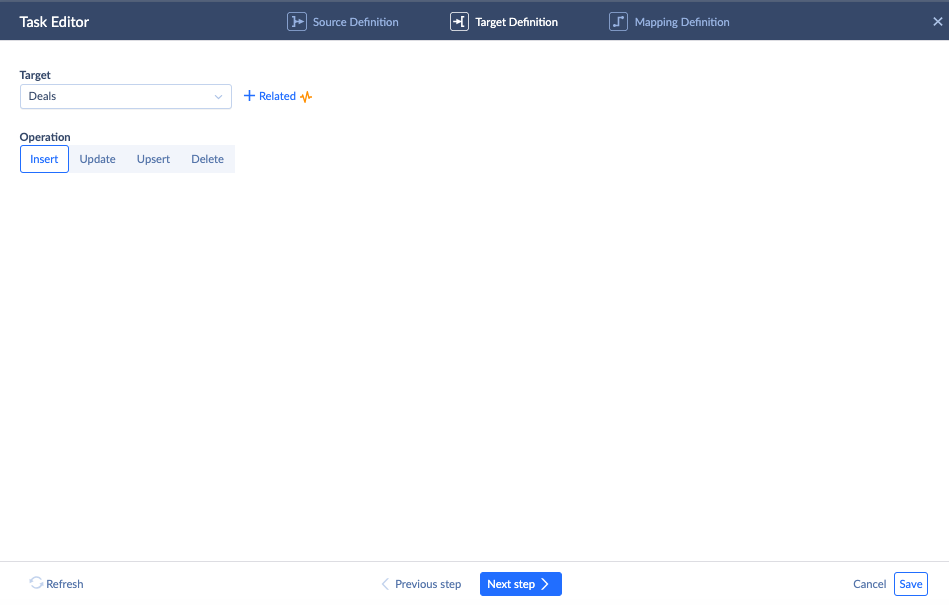
NOTE: Skyvia doesn’t support UPSERT import operation for the Snowflake connector.
- Map target columns to source columns – see more details on mapping here.

- Click Save to preserve instructions for the import package, then click Create in the tab bar to preserve the import package.
- Click Schedule to set the timing of the package.
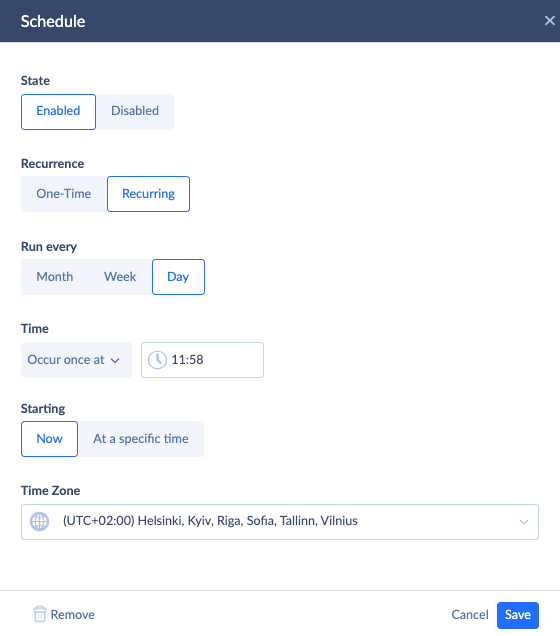
To execute the import package immediately, click Run. Otherwise, it’s possible to transfer data from HubSpot to Snowflake later — the import package could be found under Objects -> Integrations.
Data Analysis in Snowflake
As Snowflake allows companies to accumulate incredibly large amounts of data and scale on demand, this creates perfect preconditions for data analysis. Snowflake itself doesn’t provide analytical modules but perfectly integrates with BI tools such as Tableau, Looker, and many others. They analyze and visualize data by representing sophisticated graphs and charts so businesses can retrieve detailed information on their operational performance and growth.
Reports generated by HubSpot itself aren’t exhaustive enough, so other analytical tools might be handy. Given the above-mentioned opportunities provided by Snowflake and its conformity with tools for comprehensive data analysis, loading HubSpot data, there allows businesses to track key marketing performance metrics, perform target audience segmentation, and analyze customer lifecycle.
Other Sync Scenarios
The number of possible operations with data within Snowflake isn’t just limited to the analytical and statistical reports. There are also other cases of how data could be effectively used to help businesses in their daily workflows and strategic planning.
Data Activation
The data accumulated in Snowflake from various sources (contact details, companies, customer service tickets, etc.) could be sent back to them with reverse ETL. For instance, all contact details gathered in Snowflake tables could be transferred to HubSpot to enrich the global CRM of a company.
Storage
A data warehouse could also be perceived as a reserve storage location for business data. Skyvia helps to organize such operations with the data replication scenario described above.
AI Models
Machine learning and artificial intelligence algorithms require large data sets for learning. Once those models are trained, they will be used in predictive analysis or error detection, which tends to facilitate business operations.
Conclusion
Snowflake data warehouse makes up a solid foundation for data analysis widely used across industries. It allows companies to be aware of their current performance and decide what they can do about it — keep on going or change strategic development plans.
Data from HubSpot informs companies about their target audience’s behavioral patterns. Customer purchasing habits, sales deals information, and other valuable insights come as a result of the HubSpot to Snowflake integration with the help of Skyvia. Just create an integration package for data transfer from HubSpot to Snowflake and set data mapping and scheduling parameters in Skyvia.
With Skyvia solutions, businesses can bring data from dozens of other sources to Snowflake and benefit from it to drive go-to-market success.

